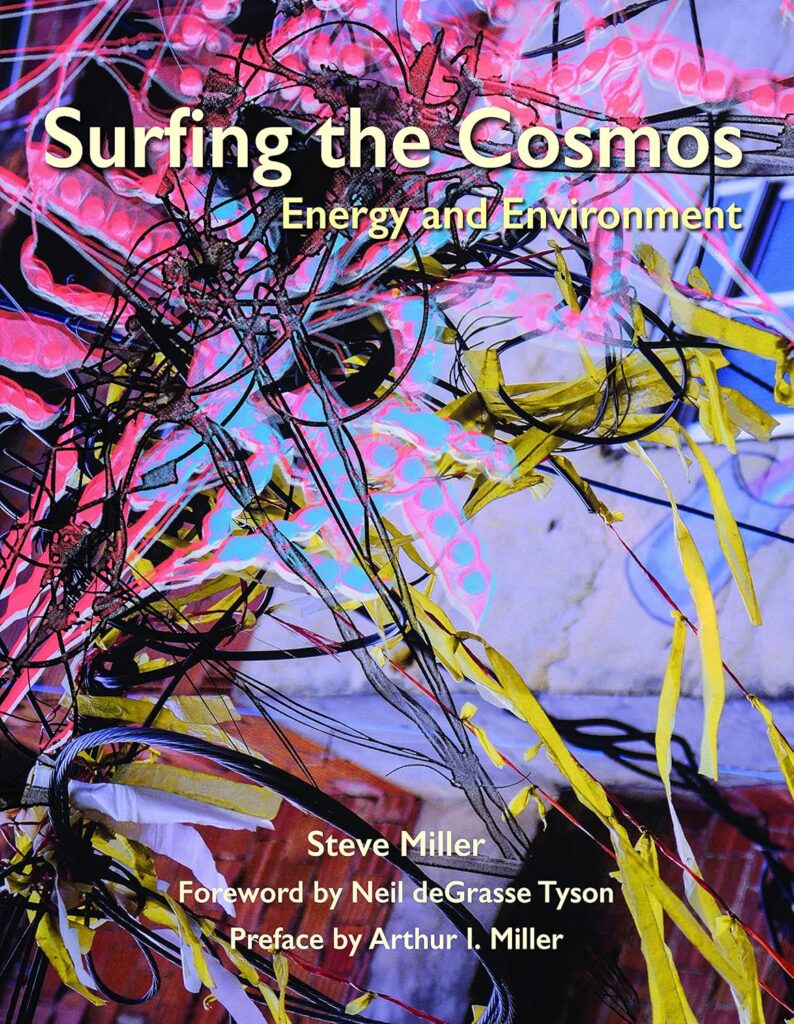Foreword: Surfing the Cosmos: Energy and Environment
From Surfing the Cosmos: Energy and Environment by Steve Miller.
January 24, 2022

Energy is a relatively modern concern physics, not fully understood until well into the 19th century. The environment, too, is also a relatively modern concern. Civilization didn’t cared much for it until well into the 20th century.
Today we think of energy as the driver of civilization. We fight wars over access to it. We cultivate it. We also squander it. We also implicate our use of energy as a destabilizing force on our environment. Two previously distinct branches of human interest, have now merged into a single realm.
Of all the known forms of energy, perhaps the most mysterious is electricity. Electrons, its primary carrier, were not even discovered until 1897. Very shortly thereafter we welcomed it into our homes — cities first and then the countryside became electrified. Fast-flowing rivers of these subatomic particles were summoned to do our bidding: to provide light, to run appliances, to give life to devices that entertain us. Previously arduous tasks became easier. But more importantly, we invented uses for electricity in society that were undreamt of in any previous generation
To harness and command the behavior of electricity requires wires. Lots of them. Going everywhere. Think about is: for every electrical appliance you plug into the wall, there’s a continuous connection of wires from the on-switch of your device to a far-off power plant, generating your electricity from sources of energy that are not otherwise directly useful to you, such as wind, hydro, solar, nuclear, coal, or other fossil fuels.
If every device connects to wires, and all wires lead to the power plant, and everybody wants electricity, that’s the recipe for a Gordian tangle of wires. Yes, they’re everywhere — wherever there’s people. From the wires that power hillside towns in Brasil to the wires that power the world’s largest particle accelerator in Switzerland, they’re all conduits for electrons to surf the countryside along their appointed paths.
The wires are either buried underfoot so you don’t know they’re there, or hidden in plain sight, as a kind of wallpaper backdrop of our landscape for living. Like Joyce Kilmer’s famous poem, which forced us all to pause as we reflect on a tree’s beauty that would otherwise go unnoticed, so too is our power-grid something to behold, but only if someone compels you to take notice. That’s the job of an artist.
It’s time to marvel at the intersection of our ever-increasing demand for power and the ever-growing impact of that need on our environment. It’s time to elevate electricity to art. And it’s time to remind ourselves, that science at its highest levels may be indistinguishable from art. Perhaps we know this intuitively — it’s embedded in two different expressions that mean the same thing. We’ve heard them before, if not said them ourselves. In praise of expertise, “You’ve got it down to a science.” Or you might otherwise hear, “You’ve raise it to an art.” Surfing the Cosmos: Energy and Environment accomplishes both simultaneously. After feasting on its imagery, I’m provided a glorious connection between the complex but simple wires that power villages and the simple but complex wires that decode the foundations of particle physics. I will never look at electrical wires the same way again.


